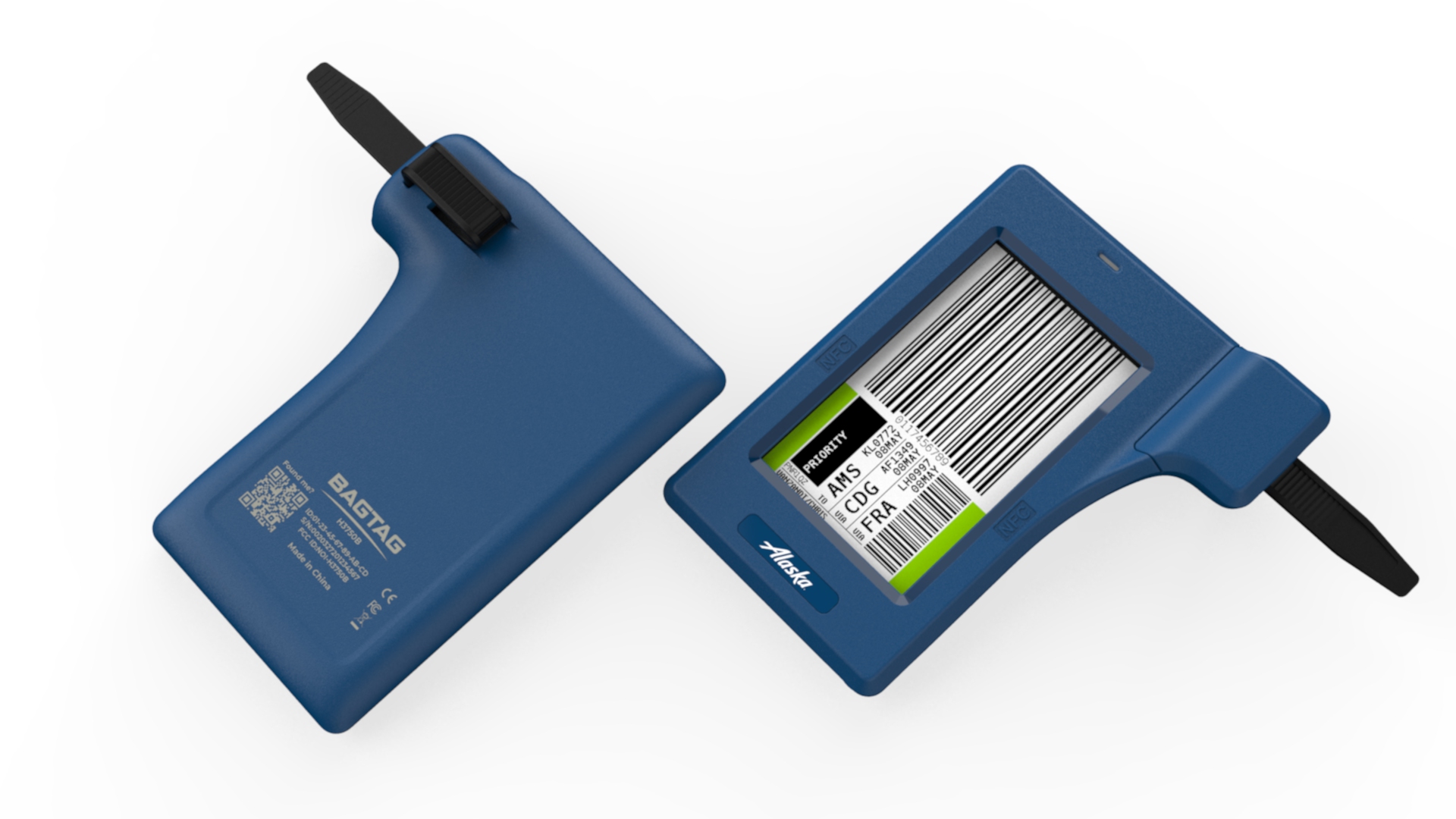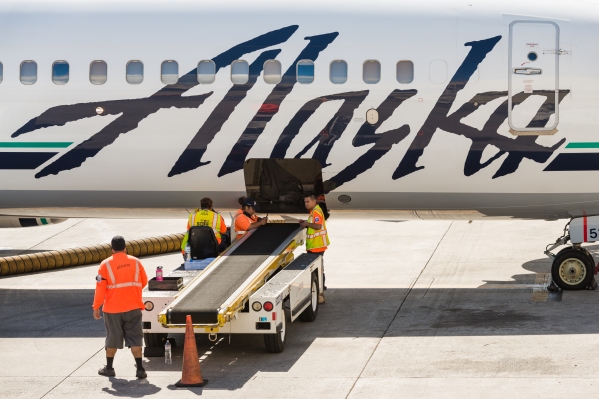Given the current state of the worldwide aviation industry, checking a bag may not be the best idea right now. But sometimes you don’t have a choice and soon, at least if you’re flying Alaska Airlines, the whole process of checking a bag may just become a little bit easier. After a trial a few years ago, the airline today announced that it’ll start rolling out free electronic bag tags to a group of 2,500 of its Mileage Plan elites flying out of San Jose now, with a wide rollout to all Mileage Plan members (who will have to pay for their tags) coming in 2023.
Unlike the current system, where you print a tag at the airport — or have an airline employee do it for you — with these rugged new electronic tags you simply check in on your phone as usual. Then, after you decide you want to check a bag, you hold the phone close to the tag and, using your phone’s NFC chip, transfer that data to the tag to display it on the built-in e-ink display, which simply displays the standard barcode you’d also see on a printed bag tag. In addition, the tag also features an RFID chip, which a number of airports now use for their automated baggage systems.

Image Credits: Alaska
Charu Jain, Alaska’s senior VP of merchandising and innovation, tells me that the company will first provide free tags to about 2,500 flyers who regularly check bags in San Jose. All Mileage Plan members will be able to purchase these tags in early 2023.
“At Alaska, we’re very focused on improving our guests’ experience at every touchpoint, whether they’re buying a ticket or shopping — when they go to the airport or whether they’re on flight or they’re collecting their baggage,” she explained. “So as we looked at the airport environment specifically related to this project — you know, 50% of our guests check in a bag — and that means they need a bag tag because the bag tag is needed to route it through the whole system.” But the bag tag also becomes the bottleneck at the airport, because even if a traveler has already paid for their bag, they still have to print it and check it.
Now, for those lucky few in San Jose, the entire process will be automated. They simply arrive with the electronic bag tag and use the airline’s new self-service bag drops (which scan and weigh the bag automatically). Jain believes that for these travelers, the entire process of moving through the airport lobby and checking their bags should only take a few minutes. She noted that the airline already has a very high number of passengers who use its self-service check-in options and bag-tag printers.
When Alaska first tested an early version of this new bag tag in 2015, that tag still used batteries (the new one doesn’t, with the phone providing just enough energy to change the e-ink display) and had a few buttons. The tag is made of highly durable plastic. Gus Naughton, a senior software engineer at Alaska who worked on this project, told me the airline tested it by running everything from luggage carts, catering trucks and even jet bridge wheels over it. Apparently it did just fine, and these new tags could last a lifetime, the airline argues, saving quite a bit of paper in the process (and while Alaska argues there’s a sustainability aspect to all of this, my guess is that it’ll take quite a few bag tags to achieve any kind of parity given the energy and materials involved in creating these tags).
Anyway — don’t check a bag if you can avoid it. Thank me later.
